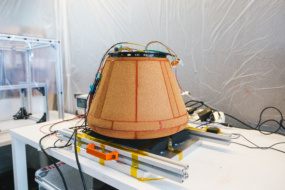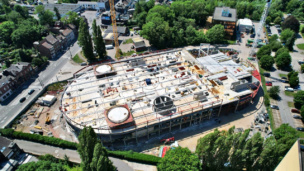QuadSAT said this morning that it partnered with ESA’s ESOC mission control center to run a drone-based measurement campaign of 13- and 15-meter European antennas at Kiruna Earth Station. The Danish startup says that this represents the first time anyone has used a drone to measure a 15m antenna and run tracking tests on it.
The tech
QuadSAT has fitted drones with a radiofrequency (RF) payload and integrated the stack with bespoke automation/measurement software. The company’s quadcopters fly in front of an antenna, scans the entire area in a lawn-mower fashion, and generate “a heatmap of the entire performance of the antenna,” CEO Joakim Espeland told Payload last fall.
- The idea is to simulate on-orbit testing of antennas.
- But…by using drones rather than space assets for antenna diagnostics and calibration, operators could theoretically minimize downtime and the opportunity costs of using a satellite for ground segment testing.
Target markets
While the startup eventually envisions using flying robots to inspect all manner of critical infrastructure, it’s first focused on the satellite industry, where the economics are most favorable.
“The highest value per measurement comes from large antennas,” Espeland said. “What I really want to do…is make drones just another tool in the toolbag for satellite technicians and antenna engineers.”
ESA’s take: In a statement, Piermario Besso, head of the ESA’s antenna and infrastructure section, said: “The QuadSAT system has the potential to revolutionize satellite antenna testing and measurement, especially as it has now proven its ability to test large antennas.” The system will help improve QA and reliability, Besso added.
The endgame: Espeland hopes that ideally, at scale, QuadSAT will “bring down the price per measurement so much that it would be negligent not to measure an antenna whenever a technician visited.”




